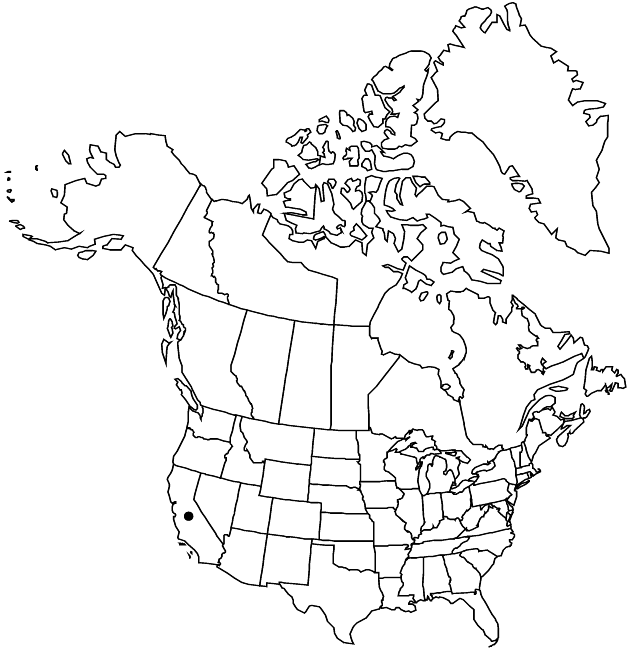Hazardia stenolepis
Vasc. Pl. San Luis Obispo Co., 296. 1970.
Shrubs, 30–100 cm. Stems sparsely short-hispidulous. Leaves sessile; blades obovate to oblong, 15–25 × 5–12 mm, coriaceous, bases subclasping, margins coarsely spinulose-dentate or serrate (with 5–11 pairs of teeth), faces glabrous. Heads in densely spiciform arrays. Involucres cuneate to very narrowly turbinate, 10–17 × 3–6 mm. Phyllaries stiffly erect, almost completely stramineous, linear-lanceolate, faces glabrous except minutely gland-dotted at tips. Ray-florets 0. Disc-florets 4–8 (–10); corollas 7–9 mm. Cypselae 5–8 mm, glabrous. 2n = 10.
Phenology: Flowering Sep–Nov.
Habitat: Oak-pine woods
Elevation: 150–2000 m
Distribution

Calif., Mexico (Baja California)
Discussion
Hazardia stenolepis is distinguished by its hairy stems, glabrous, relatively small leaves, discoid heads, and long, narrow involucres with stramineous, linear-lanceolate phyllaries.
Selected References
None.
Lower Taxa
"fine" is not a number.